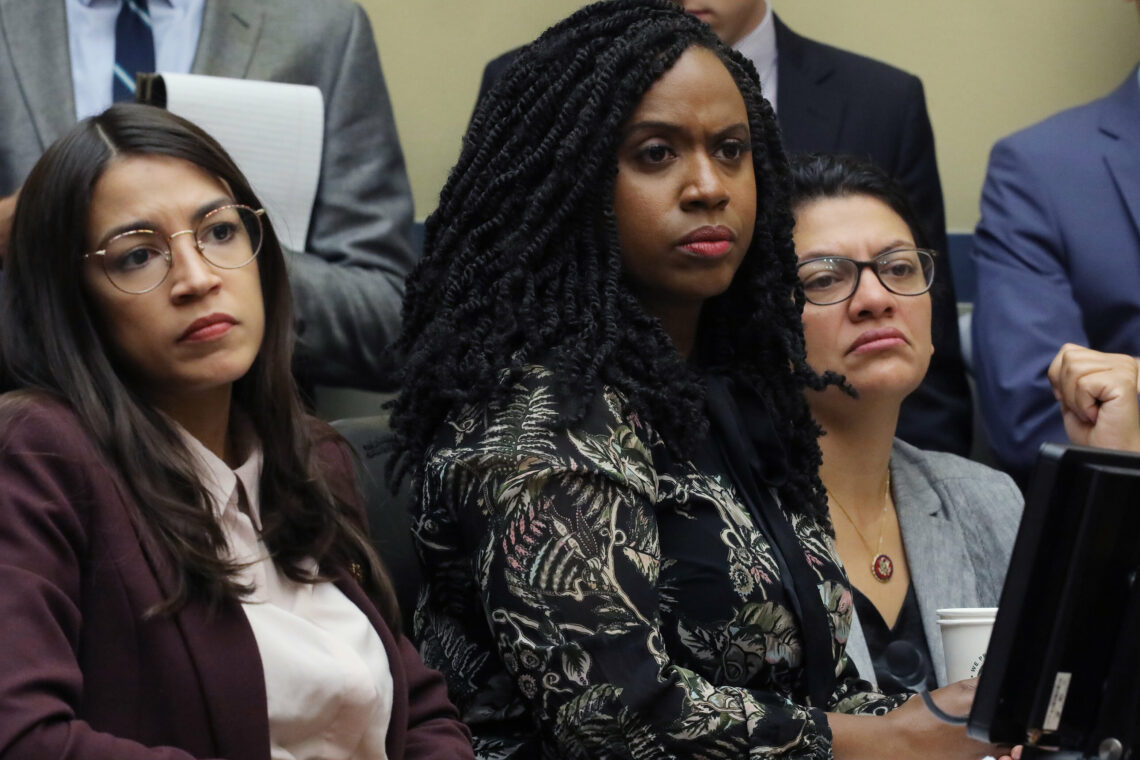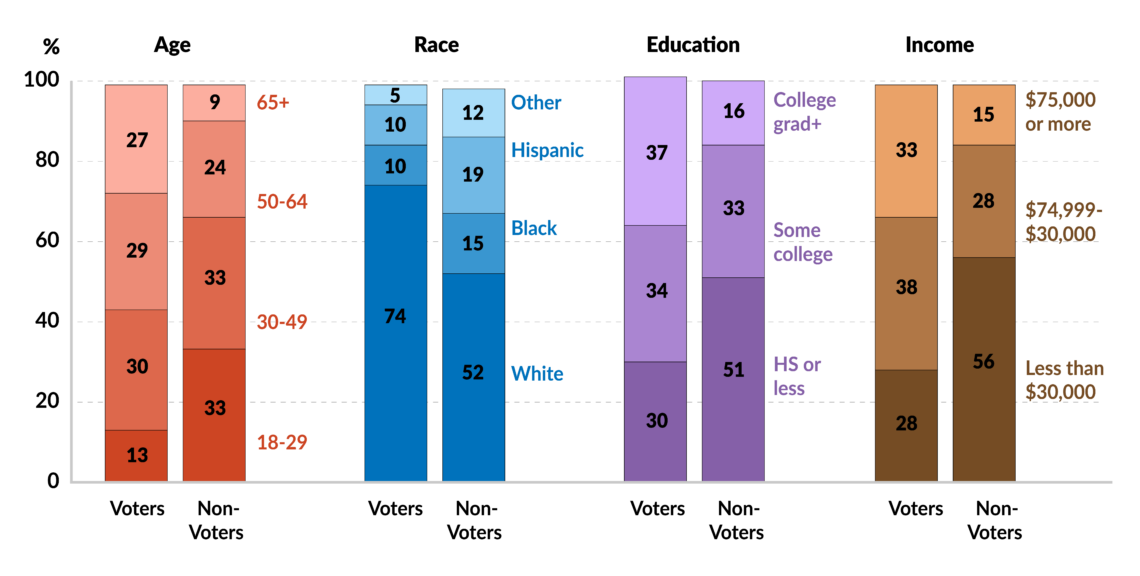The new American left and the election
Ahead of the elections in the U.S., older, centrist Democrats and the party’s young socialist faction have compromised in hopes of boosting Joe Biden’s chances. But even if the former VP wins, the new American left is unlikely to successfully implement their radical agenda.

In a nutshell
- Social tensions have become a top issue in the U.S. election
- The Democratic Left is promoting a socialist agenda
- Voter turnout among the youth could play a decisive role
This year’s American presidential election will be even more influential than usual. According to a Pew survey, 83 percent of registered voters say it “really matters who will be the next President of the United States” – more than at any time in the last 20 years.
Under President Donald Trump, the U.S. has experienced extreme polarization. Anger, frustration, hyperpartisanship and a loss of faith in institutions are weighing on American politics. Democrats and Republicans disagree on virtually every issue. Both sides believe that the upcoming vote will be crucial for the fate of the nation.
The election transcends traditional party affiliations. Democratic candidate Joe Biden is backed by Hollywood celebrities, a substantial part of the business community, most Catholic bishops and several prominent anti-Trump Republicans – mainly neoconservative foreign policy interventionists. Meanwhile, Mr. Trump claims to be fighting for the working poor against a corrupt, multilateralist, warmongering anti-American system.
Social and racial unrest
At the onset of the year, surprisingly robust economic growth increased the likelihood of a second term for President Trump. Then came the coronavirus pandemic. Because of the partial shutdown, millions of Americans lost their jobs – predominantly in the low-wage sector – while the infection rate steadily rose. The administration found itself torn between containing the spread of the virus and keeping the economy running. Most Americans believe the authorities failed to properly handle the health crisis.
Social and racial unrest are once again a top priority. The violent death of several black Americans during encounters with police triggered enormous protests, as well as some riots. The race issue will influence the vote, but it is not at all obvious in favor of whom. President Trump could compensate for losses amid the black electorate by promising law and order to undecided white suburban residents. Mr. Biden has declared his support for the Black Lives Matter movement and also promised a return to normalcy.
The partnership between the liberal establishment and the left is asymmetrical.
To garner as much support as possible, Democrats refrained from clearly defining their program, aware that commitments on any substantial issue would imperil the fragile but broad anti-Trump alliance. A radical swing to the left as proposed by socialist Senator Bernie Sanders would have alienated many voters, much like former Secretary of State Hillary Clinton’s liberal pro-establishment course lost her the support of the left.
The partnership between the liberal establishment and the radical left is asymmetrical. The classic liberal elite provides the money, while the left produces the ideas. Speaker Nancy Pelosi, perhaps the smartest strategist of the Democratic Party, does her best to tame the radical faction. Still, the party has moved more and more to the left during the Trump presidency.
For the sake of the anti-Trump front, the radical left is prepared to negotiate – but it will not abandon its socialist agenda. Mr. Biden is also mindful not to alienate anti-racist groups or LGBT activists. Transgender equality, he said, “is the civil rights issue of our time.” If elected, he is likely to pursue a pro-immigration agenda, a green climate policy, a return to the Iran nuclear deal and a multilateral approach to foreign affairs.
Radical socialism
In the House of Representatives, a group of four women nicknamed “The Squad” – Alexandria Ocasio-Cortez of New York, Ilhan Omar of Minnesota, Ayanna Pressley of Massachusetts and Rashida Tlaib of Michigan – stand for socialism. Ms. Ocasio-Cortez promotes a “Green New Deal” that could halve the defense budget, shut down nuclear power plants, as well as eliminate the oil and gas industry and all gasoline-engine automobiles within a decade. She argues that it will be too late to reverse climate change if her recommendations are not implemented in time. Over a hundred congressional Democrats support her program. That hostility toward the free market and individual choice is shared by many in the Democratic Party’s base.
The American left features a wide array of leanings, split into different subgroups due to identity politics. There is also a Marxist faction revolving around the Jacobin magazine and Catalyst journal. Their intellectual leader, New York University sociologist Vivek Chibber, encourages the left “to cut the umbilical cord tying it to campuses and nonprofits and return to immersing itself in the milieu of labor” to achieve a constrained “market socialism” in which “economic decision makers will be democratically accountable.”
Facts & figures

Millennials and Generation Z
In academia and mass media, working-class activism is much less influential than cultural Marxism. For many years, American colleges and universities have been laying the foundation for political radicalism by subsidizing left-leaning journalists and opinion makers. The cultural hegemony of the left on campuses is overwhelming. The political consequences were visible in the 2016 Democratic primaries, where voters over 50 preferred Secretary Clinton while the younger generation opted for Senator Sanders. This trend is also visible in this year’s polls among college students, which indicates a strong preference for leftist candidates.
Young Americans usually consider climate change and income inequality as the most important issues. Generation Y (millennials) and Generation Z (born after 1995) seem to have markedly different priorities than older generations. As they will make up 37 percent of eligible voters in November, the outcome of the elections may depend on whether they vote. Their participation rate – usually very low – increased during the 2018 midterm elections, boosted in part by the movement for gun violence prevention (March for Our Lives).
The chances for the Democratic left to implement its program are rather slim, even if Mr. Biden wins the election.
Radical ideas are catching on among young people. This year’s anti-racist and iconoclastic movements will fuel the anti-Trump vote in November. In 2016, four in 10 Americans eligible to vote did not cast a ballot. According to a 2018 Pew study, nonvoters were more likely to be younger, less educated, less affluent, nonwhite and Democratic: “Among nonvoters who hold a set of political values with a distinct ideological orientation, those with generally liberal values (30 percent of all nonvoters) considerably outnumbered those with generally conservative values (18 percent).”
Much will depend on how many Democratic former nonvoters show up at the ballot box on November 3. Donald Trump defeated Secretary Clinton because 590,000 former Obama voters did not take part in the elections.
Will black voters decide on the outcome? According to the American National Election Studies, 62 percent of black voters 50 years and older identify with the Democratic Party. But that number is only 41 percent for black voters younger than 35.
Scenarios
The chances for the Democratic left to implement its program are rather slim, even if Mr. Biden wins the election. The same “deep state” that curbed the libertarian fiscal agenda of the pro-Trump Tea Party movement would immediately block a radical socialist turn.
Brian Riedl, a senior fellow at the Manhattan Institute, doubts taxing the wealthy could finance socialism:
Washington faces a staggering baseline budget deficit of $16.3 trillion between 2020 and 2030 (nearly doubling the national debt). And yet the additional 10-year spending initiatives totaled $97 trillion for Bernie Sanders during his presidential campaign, approximately $40 trillion for Elizabeth Warren and Kamala Harris during theirs, $11 trillion for Joe Biden, and an estimated $50 trillion to $100 trillion for Alexandria Ocasio-Cortez’s Green New Deal. … Yet America’s 800 billionaires own a combined $3.4 trillion in wealth. Seizing their every penny could provide a one-time payment of $10,000 per person, or fund Medicare for All for a little over one year. That’s it. More likely is a return to an Obama-style reformism, financed by higher payroll and sales taxes. Mr. Biden would put a partial expansion of Medicare on his agenda, including healthcare insurance for illegal immigrants as proposed by most Democratic politicians. Under the influence of the Democratic left, American capitalism would gradually adopt the rigid corporatist model prevalent in Europe, risking stagnating growth, high unemployment and soaring social expenses. Higher corporate taxes would cost jobs and cause entrepreneurial flight.
Overregulation in the U.S. would spread all over the world. In the framework of a revitalized multilateralism, a new consensus on regulation would drive governments to follow the American example. Regulatory convergence, already tested in most parts of the world with lockdowns and masks during the Covid-crisis, would be as easily achieved with climate-change policies. For example, the powers of the central banks could be used to force banks to discriminate in favor of green energy.
If Mr. Biden ends up in the White House, the most visible effect would occur in foreign affairs. President Trump’s “America First” policy would give way to multilateralism and better relations with the EU. A President Biden would certainly reinstate the Paris Agreement on climate change and the Joint Comprehensive Plan of Action (the Iran nuclear deal). He would probably not increase U.S. engagement in NATO, since Europe’s geopolitical importance is waning. He would likely not opt for further military intervention in the Middle East and in Afghanistan. His policy toward China would not significantly differ from that of President Trump. A Biden victory would therefore not necessarily mean a defeat of American pragmatism.







